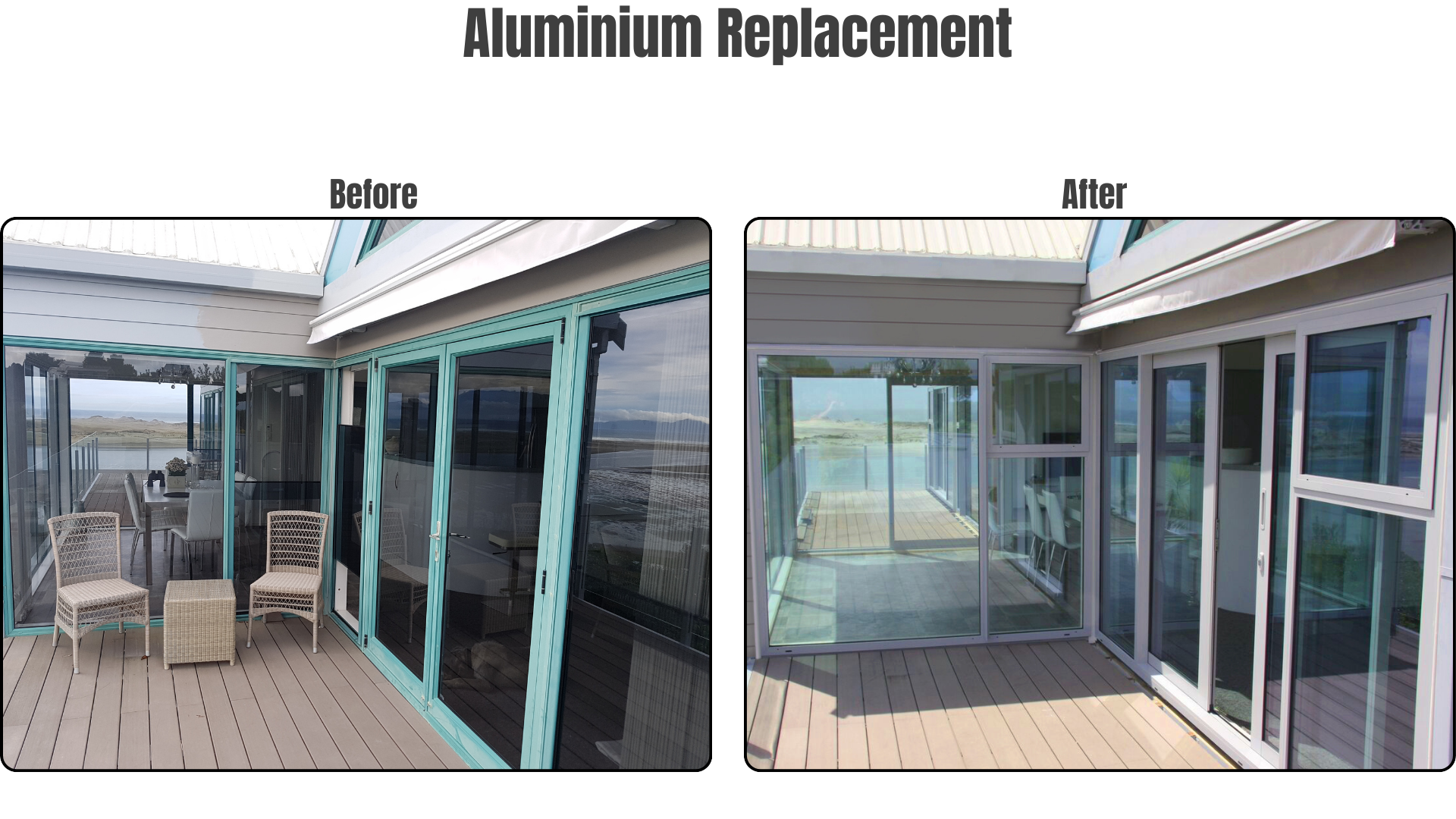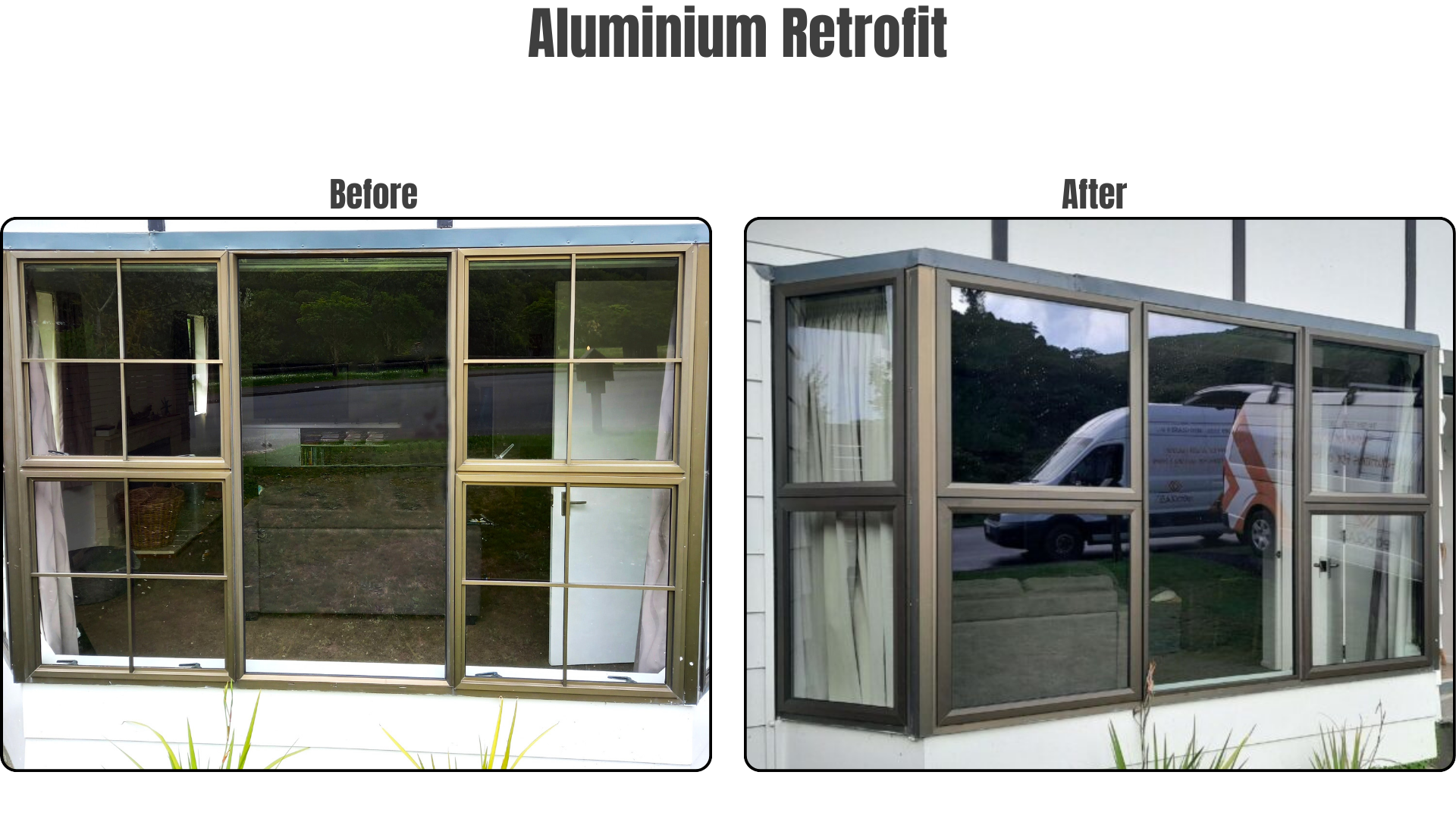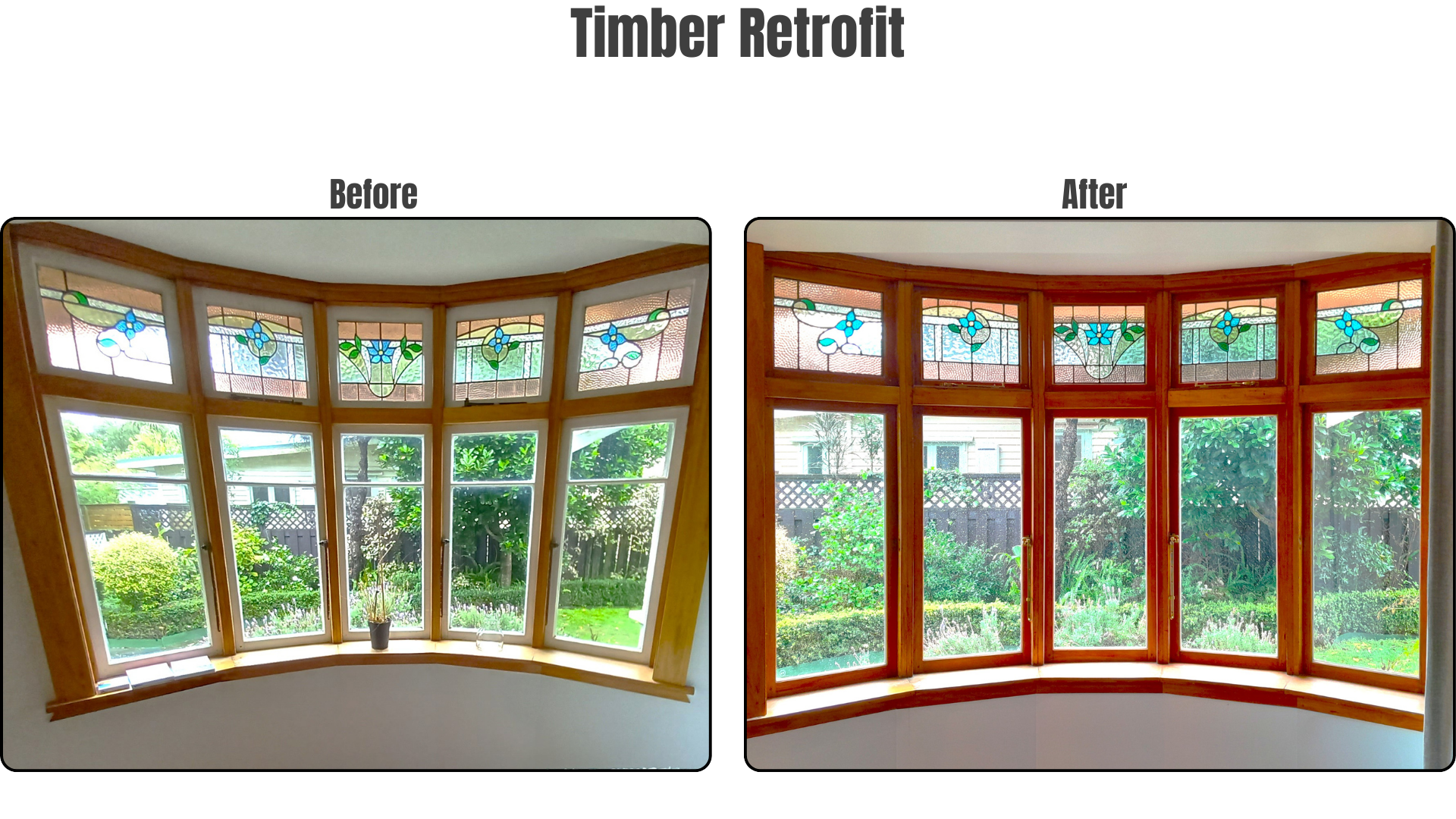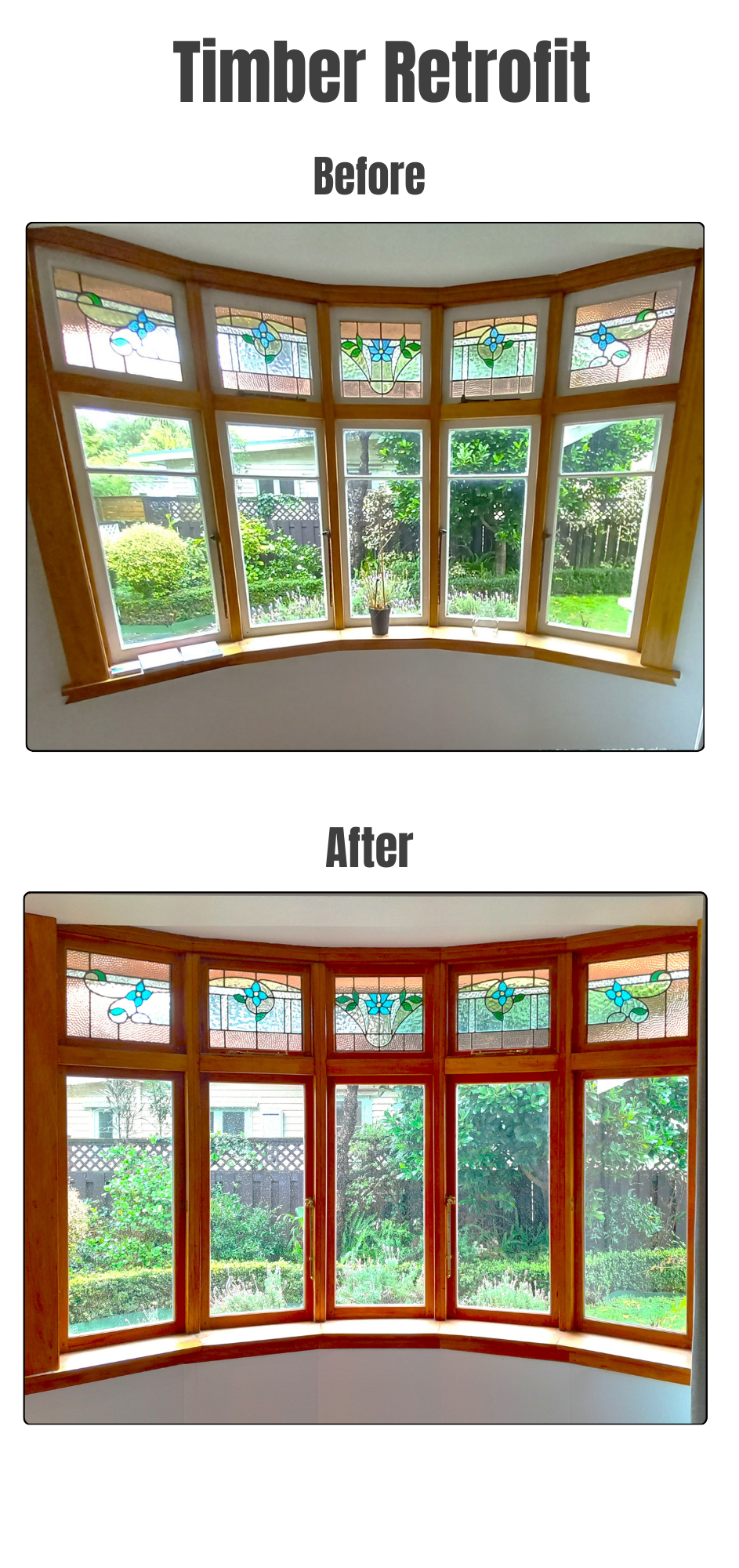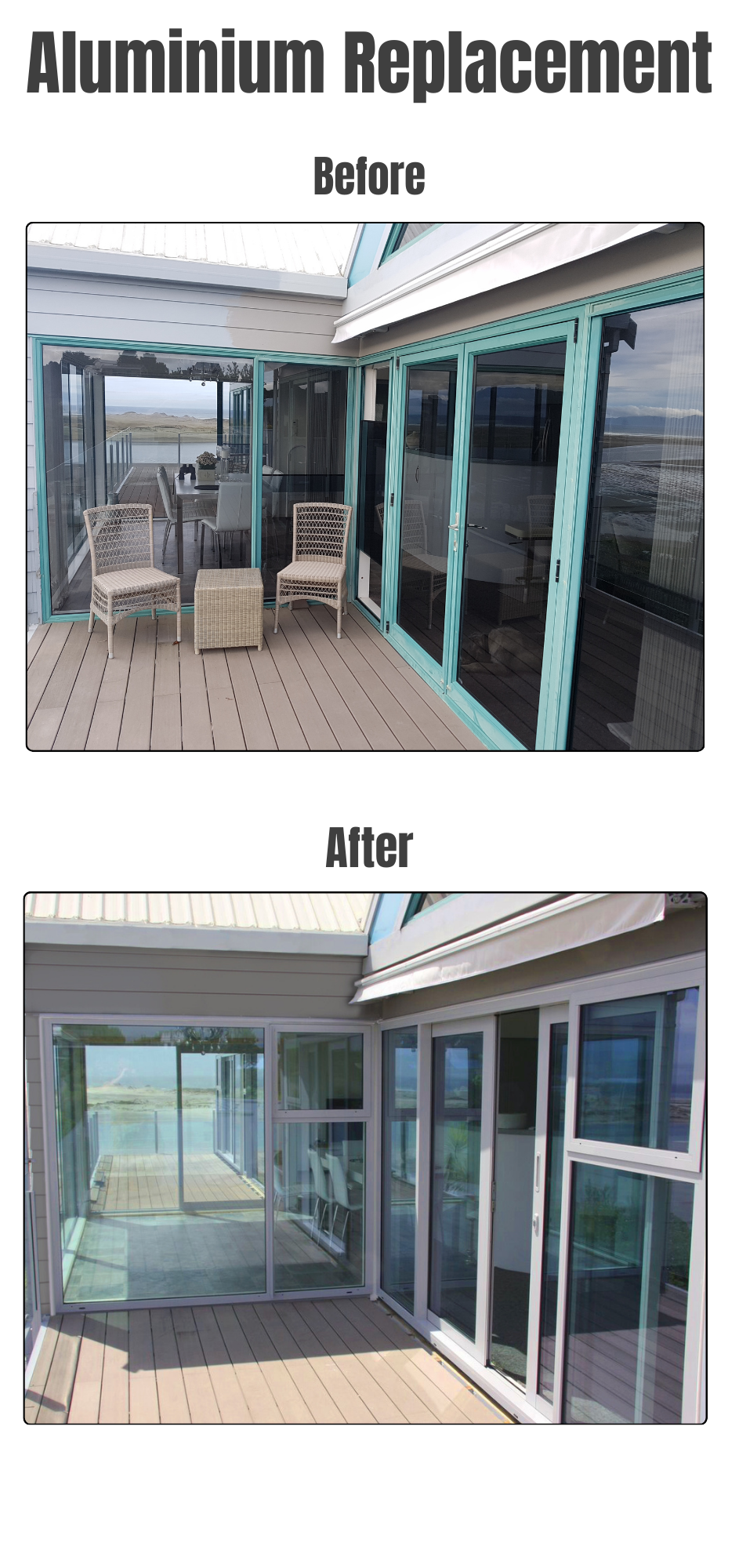Retrofit vs Replacement: What's Right for Your Home?
If you’re exploring double glazing options, you’re likely wondering whether to retrofit your existing windows or replace them entirely. It’s a question that doesn’t have just one answer, it depends on your joinery, your goals, and the condition of your current frames.
This guide explains what retrofit and replacement glazing involve, when each is the better choice, and what to expect in terms of cost, performance, and long-term value.
To quickly see which option makes the most sense for your home, you can use the Window Upgrade Advisor quiz.
What Is Retrofit Double Glazing?
Retrofit double glazing means removing the old single-pane glass from your existing window or door frames and installing modern double-glazed units in their place. The key difference from full replacement of joinery, is that retrofit double glazing is done without removing the frames themselves. This applies for both timber framed and aluminium framed windows and doors.
This approach can also include:
- Low E (Emissivity) glass, like SuperTherm™, for improved thermal performance
- Upgraded seals, hinges, and hardware
- Repairs to solid timber frames when needed
Retrofit is especially common in pre-1980s New Zealand homes, which often feature durable native hardwoods like rimu and mātai. These timbers are naturally insulating and have stood the test of time.
The quality of a retrofit double-glazing outcome, in both appearance and performance, depends on the system used. That’s where RetroGLAZE stands apart from the alternatives.
What Is Replacement Double Glazing?
Replacement double glazing involves removing the entire window or door unit, including the frame, and installing a new system made from modern materials. Most commonly, this means thermally enhanced aluminium joinery combined with high-performance double glazing. For retroGLAZE, this means pairing our high performance Supertherm Low-E Glass with our cutting edge thermally enhanced frame systems.
Our thermally enhanced aluminium frames reduce cold bridging and meet New Zealand’s updated H1 energy efficiency requirements (MBIE, 2022). Paired with Low E glass, they deliver excellent weather performance and moisture control.
When To Retrofit?
For timber framed windows and doors – retrofit double glazing is best for your home when your existing frames are in reasonably good condition. Native woods can be refurbished, resealed, and fitted with modern glazing to provide excellent comfort and energy savings, often at a lower cost than full replacement.
This option is especially well-suited to:
- Villas and bungalows built before 1960
- Homes with architectural or heritage value
- Situations where maintaining the original look is a priority
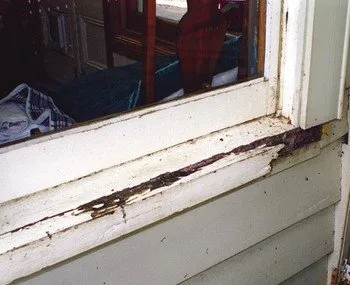
For aluminium-framed windows and doors – retrofit double glazing is well suited for any joinery that is robust. The process includes replacement of window and door seals, and most hardware, meaning that the joinery will receive an overhaul.
This option is especially suited to homes where the current functionality is to be kept.
Double Glazing 101Questions & Answers
When To Replace?
Replacement is usually best for your home when the original joinery:
- Is structurally unsound
- Shows a lot of rot, warping, corrosion or moisture ingress (possible to retrofit but may be more expensive)
- Can’t accommodate a modern glass unit due to size or profile
It’s also a preferred option for modernising the look of your home, improving airtightness, or meeting insulation targets in climate zones with colder winters or higher wind exposure.
According to NIWA, New Zealand is experiencing more extreme weather events and rainfall, increasing the need for robust building envelopes, including weathertight, high-performance windows.
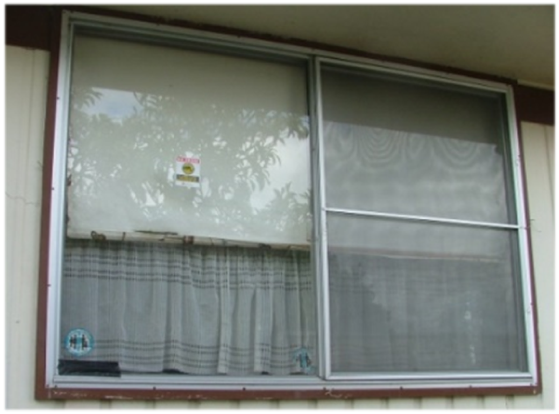
When to Both Retrofit and Replace?
In some situations, the best option is to retrofit double glazing in some parts of your home and carry out full replacements in others.
This approach works well when some windows or doors are still robust and function as intended, while other areas may need a complete replacement due to condition issues or a change in style, such as switching from French doors to sliding doors.
Retrofit vs Replacement table
| Options → | Retrofit: Aluminium frames | Retrofit: Timber frames | Replacement: New thermally-enhanced units |
| Description | Refurbish the existing aluminium and fit double glazing. | Refurbish the existing timber and fit double glazing. | Remove old units and install new thermally enhanced frames with double glazing. |
| Upfront cost | 30–50% cheaper than replacement. | 20–60% cheaper than replacement (depends on repairs/detailing). | Highest due to more materials and labour. |
| Appearance | Modernised look, seals and hardware typically replaced. | Keeps original character and beauty with subtle updates (timber beads instead of putty). Meets heritage home requirements. | New, modern design and operation. |
| Performance | Big glass improvements. Frames may still feel cold. Function restored/improved. | Superior window insulation performance, significantly warmer than single glazing. Warmer frame feel with condensation risk nearly eliminated. New weather seals improve the air/weather tightness. | Modern home window and door joinery comfort. |
| Disruption | Low, window-by-window work. Short duration (days) and the home can be lived in during work. Building consent not required. All old joinery and glass removed from site. | Moderate. Tidy but may require more craftsman time e.g. repairs. Building consent not required. Typically completed over 1-3 weeks and home can be lived in during the project. Painting of new primed profiles may be needed. | Moderate. Building consent generally not required if there are no structural changes. Typically completed over 1-2 weeks and home can be lived in during the project. Finishing work may be required (painting new reveals, architraves). |
| Best when | Frames are sound and you want a budget lift. | Frames are sound and you want to keep character. | Frames are tired/rotting, you’re renovating, or want max comfort & a modern feel with minimum condensation. |
| Environmental factors | Reuses existing joinery, the removed aluminium is recycled. Old glass is recyclable in larger cities. | Same reuse/recycling benefits as aluminium retrofit. | Increased use of landfill. Recycling where possible, includes any old aluminium joinery, and metal hardware. Old glass can be recycled in larger cities. |
| Heads-up | Older non-thermal aluminium stays a cold bridge. Some edge condensation possible. Disruption varies by installer. | Major repairs/heritage detailing can increase cost to potentially be more than replacement. Some businesses do more work on-site than factories. Plan painting right after if necessary. | Higher cost but easiest to meet modern performance targets. |
Two main things for you to consider
- Frame condition – Are your frames solid and working properly (no obvious rot/structural degradation, open/close smoothly) and likely to fit modern double-glazed glass? A quick site check can confirm this. Joinery repairs can be identified and completed as part of a project.
- Priorities – What matters more right now? Keeping the current look and spending less upfront, or getting the warmest, driest result with a fresh look (usually more work and cost)?
Still Unsure? Let's Help You Decide.
Every home is unique. That’s why we recommend a tailored site visit. Our team will:
- Inspect the condition of your joinery
- Discuss your goals and budget
- Provide a clear comparison of retrofit vs replacement
- Offer a no-obligation quote
Or, you can complete our quick Window Advisor Quiz now to get a personalised recommendation and next steps immediately!
Whether you’re looking to preserve the charm of a character villa or upgrade to sleek modern glazing, we’ll help you find the best path forward for your home.
Retrofit vs Replacement FAQs
When heritage timber repairs, shaped/arched panes, true muntins, tricky access/scaffolding, or consent add lots of labour and materials.
Both improve comfort a lot. New thermally-broken aluminium usually wins on whole-window warmth. Timber retrofits feel warmer at the frame than older aluminium.
Possibly. The glass is warmer, but older non-thermal aluminium frames can still show edge condensation on cold mornings, depending on your home’s humidity levels.
Often you don’t for simple retrofits but check locally. Full replacement is more likely to need consent, especially with reclads/layout changes.
Retrofit installations are typically faster and carried out room by room, minimising disruption and keeping the site tidy
Replacement requires more site work and finishing, but it delivers a full new window system.
